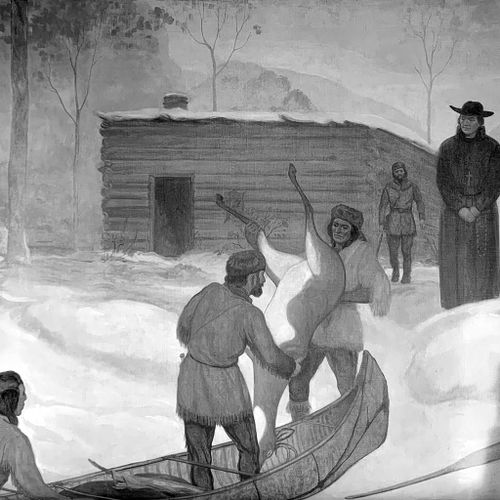Wilderness, Winter Scene

Title
Wilderness, Winter Scene
Date
1934
Artist
Richard Fayerweather Babcock (1887-1954)
Location
Legler Regional Library
Context
Babcock’s mural illustrates Father Marquette’s winter quarters near the Chicago River, a scene that represents a watershed moment in the European colonial conquest of the North American continent – which resulted in the forced displacement and genocide of the American Indian population of the region. Jesuit missionary Pere Marquette and explorer Louis Joliet were in search of a water passage from the Mississippi River to the Great Lakes and on their return north from the Mississippi, in 1674, Indians brought them up the Illinois river to a marshy portage that led to the Chicago River and Lake Michigan. The discovery of this connection would open the natural resources of the mid-continent to sources of capital in the east, and was responsible for the growth of Chicago as a transportation nexus in the 19th century. Marquette had been ill on the journey and died before Joliet and their men could return to Marquette’s mission near Mackinac Island. Babcock’s painting shows Marquette and Joliet standing with their men before a wooden structure and Indians near their teepees. An Indian and a trapper arrive in a canoe with freshly caught game. The snowy scene is painted in closely related hues of white, buff and brown, related to a style known as “tonalism.” The work was commissioned for Legler Library by the Public Works of Art Project (PWAP), the precursor to the Federal Art Program (1935-1943), part of the New Deal relief efforts that supported artists during the Great Depression. Wilderness, Winter Scene was painted and installed over the course of 1933 and I934, when Chicago was celebrating the 100th anniversary of its organization as a city; it was also the centenary of the 1833 Treaty of Chicago, an agreement that insured the removal of Potawatomi Indians from Illinois.